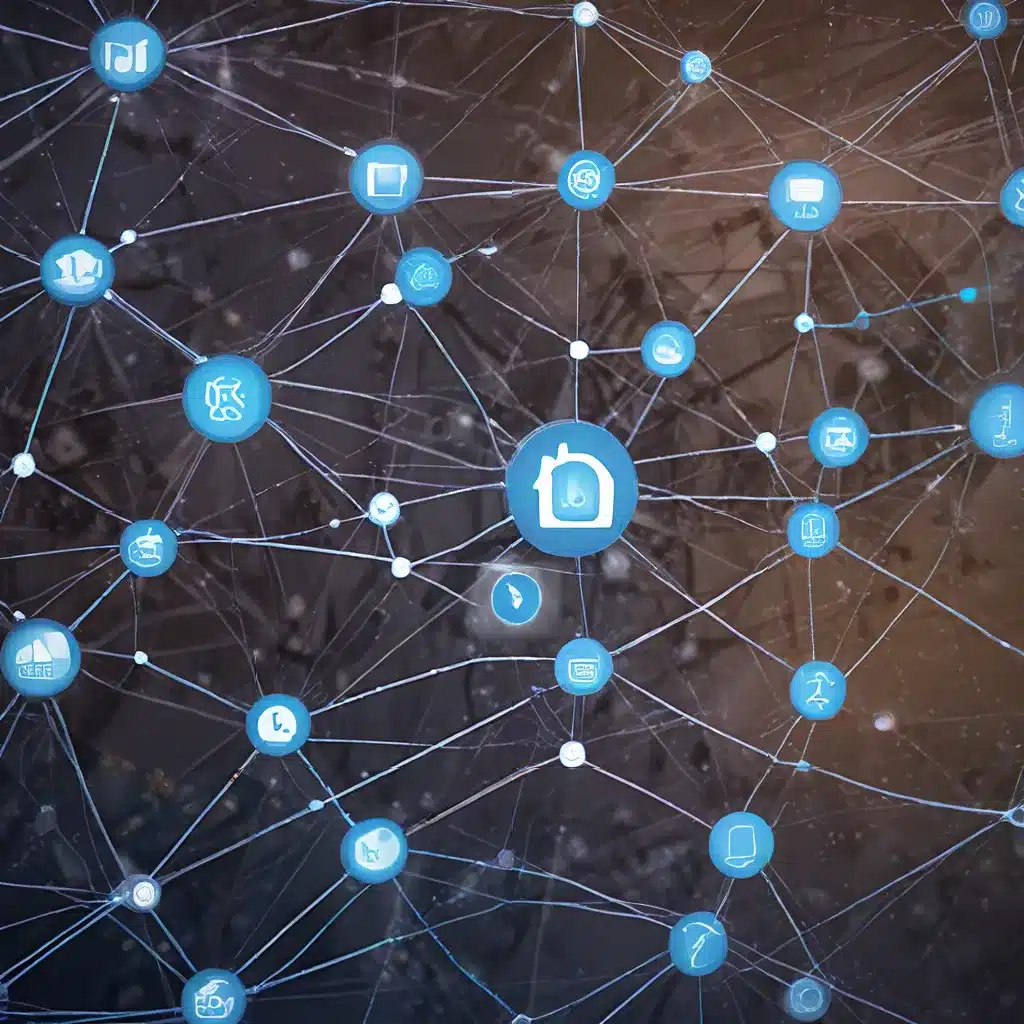
Understanding the Evolving IoT Landscape
The Internet of Things (IoT) has revolutionized the way we interact with the world around us. From smart homes to industrial automation, the integration of sensor networks and connected devices has transformed various industries, unlocking unprecedented levels of efficiency, convenience, and data-driven insights. However, as the adoption of IoT technologies continues to soar, so too do the challenges of securing these complex ecosystems.
IoT networks are inherently vulnerable, as they often comprise a diverse array of connected devices, each with its own unique security considerations. Poorly configured devices, outdated firmware, and inadequate authentication protocols can provide malicious actors with entry points to infiltrate the network, compromise sensitive data, and even disrupt critical infrastructure. The exponential growth of IoT devices, coupled with the limited computational and storage capabilities of many sensors, has made it increasingly difficult for traditional security measures to keep pace.
Innovative Approaches to IoT Security
To address the evolving security threats in IoT ecosystems, researchers and industry leaders have been exploring a range of innovative approaches. These strategies aim to enhance the overall resilience of sensor networks and safeguard the integrity of IoT systems.
Distributed Ledger Technology (DLT) and Blockchain
One promising solution is the integration of Distributed Ledger Technology (DLT) and blockchain into IoT networks. Blockchain offers a decentralized, tamper-resistant approach to data management, where transactions and device interactions are recorded in a secure, transparent, and auditable manner. By leveraging the immutability and consensus-driven nature of blockchain, IoT devices can authenticate each other, verify the integrity of data exchanges, and prevent unauthorized access to the network.
Recent studies have demonstrated the effectiveness of blockchain-based IoT architectures in enhancing data security, privacy, and trust within sensor networks. These innovations have the potential to mitigate the risks of cyber-attacks, data breaches, and unauthorized device interactions, ultimately strengthening the overall security of IoT ecosystems.
Lightweight Cryptography and Secure Protocols
Another critical aspect of IoT security is the development of lightweight cryptographic algorithms and secure communication protocols. Traditional encryption methods may not be suitable for resource-constrained IoT devices, which often have limited computational power and memory capabilities. Researchers have been exploring lightweight cryptographic solutions, such as Elliptic Curve Cryptography (ECC) and Authenticated Encryption with Associated Data (AEAD), to enable secure data transmission and device authentication without overburdening the sensor nodes.
Innovative secure protocols, such as Constrained Application Protocol (CoAP) and Lightweight Machine-to-Machine (LwM2M), have also gained traction in the IoT domain. These protocols are designed to optimize energy consumption, reduce communication overhead, and enhance end-to-end security for resource-constrained devices, making them crucial for safeguarding sensor networks.
Automated Threat Detection and Response
As the complexity of IoT ecosystems continues to grow, the need for automated threat detection and response mechanisms has become increasingly crucial. Machine learning and artificial intelligence algorithms can be leveraged to identify anomalies, detect cyber threats, and initiate appropriate countermeasures in real-time. These intelligent security solutions can analyze network traffic patterns, device behavior, and event logs to recognize and mitigate potential attacks, data breaches, and system vulnerabilities.
Researchers have demonstrated the effectiveness of AI-powered intrusion detection systems in IoT environments, which can rapidly respond to security incidents and minimize the impact of cyber-attacks on sensor networks and connected devices.
Addressing Energy Efficiency Challenges
In addition to security, another critical aspect of IoT sensor network design is energy efficiency. IoT devices, especially those deployed in remote or hard-to-access locations, often rely on limited power sources, such as batteries or energy harvesting systems. Ensuring the longevity and reliability of these devices is crucial for maintaining the integrity and functionality of the entire sensor network.
Energy-Efficient Sensor Network Topologies
Network topologies play a significant role in the energy consumption of IoT sensor networks. Hierarchical and cluster-based architectures, for example, can optimize power usage by delegating data aggregation and transmission tasks to specialized nodes, reducing the overall energy expenditure of the network.
Researchers have also explored hybrid and adaptive network topologies that dynamically adjust their structure and communication patterns based on environmental conditions and energy availability, ensuring prolonged network lifetime and resilience to power fluctuations.
Energy Harvesting and Power Management
Energy harvesting technologies, such as solar, wind, or vibration-based systems, have emerged as viable solutions to extend the operational lifetime of IoT sensor nodes. By converting ambient energy into usable electricity, these systems can reduce or even eliminate the need for battery replacements, thus enhancing the sustainability and cost-effectiveness** of sensor network deployments.
Power management strategies, such as duty cycling, adaptive sampling, and energy-aware routing, further contribute to the energy efficiency of IoT sensor networks. These techniques optimize the utilization of limited power resources, minimize unnecessary device activity, and balance the energy consumption across the network, ensuring prolonged operation and reliable data collection.
The Future of Secure and Sustainable IoT Ecosystems
As the IoT revolution continues to unfold, the need for robust security and energy-efficient sensor network designs has become increasingly paramount. The innovative approaches discussed in this article, including the integration of blockchain, the adoption of lightweight cryptography, and the implementation of automated threat detection, demonstrate the industry’s commitment to safeguarding IoT ecosystems and enabling the sustainable growth of sensor network technologies.
By addressing these critical challenges, researchers, policymakers, and industry leaders can pave the way for a future where IoT applications can thrive while maintaining the highest standards of security and energy efficiency. The sensor-networks.org platform provides a valuable resource for staying up-to-date with the latest advancements and best practices in this rapidly evolving field.